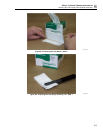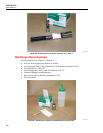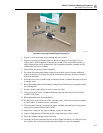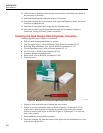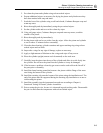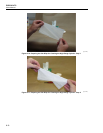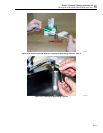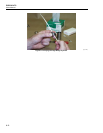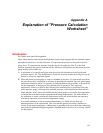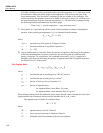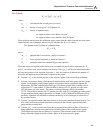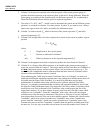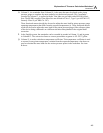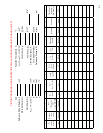A-1
Appendix A
Explanation of "Pressure Calculation
Worksheet"
Introduction
See Tables at the end of this appendix.
These tables may be used with gas and hydraulic piston pressure gauges that are operated with an
atmospheric reference or vacuum reference.
A
P represents the pressure at the piston reference
gauge level,
B
P represents the pressure desired at the device under test, and
H
P is the head
pressure created by the pressure medium and the difference in height between the piston pressure
gauge and the device under test.
A. A minimum of six significant figures must be used in all calculations involving reported
constants, masses, etc. The manufacturer's claims for accuracy assume the local gravity to be
known to at least six significant figures
B. When the piston pressure gauge is used as a standard of pressure, it is convenient to perform
the pressure-to-mass calculations in advance of operating the standard. Since the piston gauge
temperature fluctuates while it is operated, a confusing point in the procedure is the necessity
for the temperature of the gauge to be predicted prior to operation. This “expected
temperature” however is used to allow the pressure calculations to be performed. Once the
piston pressure gauge is floating at the intended pressure, a final temperature observation is
made and then “trim” masses are loaded onto the piston gauge to correct for any temperature
variations that exist between the expected and the actual temperatures. The final column in
the worksheet is used to calculate the temperature coefficient, which defines the amount of
trim that is required to correct for this temperature change.
It is usually prudent to select an expected temperature (
t ), which is lower than any
temperature that will be experienced. This is so that the operator can always add mass to
correct for the actual temperature. Adding mass is generally more convenient than subtracting
mass from the planned loading arrangement. Standard metric trim mass set is entirely suitable
for this purpose.



